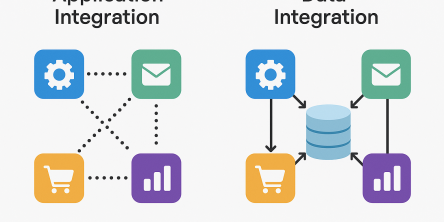Monolithic vs Microservices Security: Navigating the Landscape

While monolithic applications may have waned in popularity during the era dominated by the cloud and microservices, interest is resurgent. Organizations, in considering their position on the application modularity spectrum, are now examining both the advantages and drawbacks of relying on microservices. This evaluation encompasses factors such as cloud costs, performance concerns, and security issues, prompting a reconsideration of monolithic architectures.
With this article, I will delve into the security considerations of monolithic and microservices architectures, highlighting the nuances that distinguish them.
Monolithic Architecture: Fortifying the Citadel
A monolithic architecture represents the traditional, all-in-one approach where an entire application is built as a single, tightly integrated unit. In terms of security, monolithic systems have some inherent advantages. The consolidated nature of a monolith often results in simplified security management. With a single codebase, authentication mechanisms, and a centralized database, it becomes relatively straightforward to implement and monitor security measures.
- One key aspect of the security with this approach is the reduced attack surface. Because all elements are grouped, there are fewer avenues for potential attackers to exploit. Nevertheless, this amalgamation presents a dual challenge. A security breach in one segment of the system could jeopardize the entire application, increasing vulnerability to severe failures.
- Authentication is typically managed through a centralized system in this architecture. This simplicity can be an advantage for smaller applications, but it might pose challenges as the system scales. Furthermore, the coupling of components in a monolith means that a change in one area can have cascading effects, potentially introducing security vulnerabilities.
- Monitoring in this architecture is often less complex, as there's a single application to track. However, pinpointing issues within the monolith might be more challenging, and monitoring tools must be robust enough to handle the scale and complexity of a monolithic application.
- Containerization, while not inherently tied to monolithic architectures, is less common in this context. Containers are more associated with microservices due to their scalability and ease of deployment. However, as security measures evolve, containers are becoming an integral part of securing both monolithic and microservices architectures.
Microservices Architecture: The Security Mosaic
Microservices represent a departure from the consolidated approach, breaking down an application into independently deployable and scalable services. While this approach offers numerous advantages, their security landscape is more intricate.
- One of the primary distinctions lies in the attack surface. This architecture inherently have a larger attack surface compared to monolithic architectures. With each service acting as a potential entry point, the overall system becomes more resilient but also more complex to secure. However, this complexity allows for better isolation and containment of security breaches, limiting their impact to specific services.
- Authentication is distributed, with each service managing its authentication mechanisms. This decentralization enhances the scalability of authentication processes but requires robust coordination and management to avoid security gaps. Implementing a unified authentication system across microservices is crucial for maintaining a secure environment.
- The decoupling of services reduces the overall system's susceptibility to cascading failures. If one service fails or is compromised, it doesn't necessarily affect the entire application. This enhances the system's resilience and fault tolerance, crucial aspects of overall security.
- Monitoring microservices, on the other hand, is more challenging due to the distributed nature of the architecture. Each service needs individual monitoring, and correlating data from various services to identify and respond to security incidents requires sophisticated tools. However, the granularity allows for a more detailed and accurate analysis of the system's security posture.
- Containerization is a natural fit. Containers provide the agility and scalability required for managing and deploying numerous microservices efficiently. Container orchestration tools like Kubernetes play a crucial role in automating security measures, such as resource isolation and access control,
Choosing the Right Path: Balancing Act
While making the decision, one must consider security as the prime difference between monolithic and microservices architecture. While Monolithic architectures are simple and easy to operate, yet they may provide issues in terms of scalability and resilience to security breaches. Microservices, while encouraging flexibility and scalability, necessitate a more complex security policy to efficiently navigate the distributed landscape.
Final Words
In summary, the decision between the two architectures is not a simplistic either-or determination; rather, it hinges on aligning the architecture with the unique requirements and objectives of an organization. A crucial aspect of making a well-informed decision involves comprehending the security ramifications associated with each approach. Whether opting for the consolidated strength of a monolith or the distributed resilience of microservices, a robust and adaptive security strategy is paramount in safeguarding the digital citadel.
Similar Articles
Every news publisher's dream, or just getting started, hits that wall sooner or later. What do you build your site on? You’ve basically got two roads: WordPress or custom development.
Discover key features construction teams need in permit tracking software to boost efficiency, stay compliant, and streamline project management.
Thanks to cloud computing, specialized SaaS apps have become rather accessible.
Let’s be honest – managing royalties isn’t exactly the fun part of working in media or publishing, but it is very important because it protects the creator’s rights and work ownership.
The Software as a Service (SaaS) industry continues to transform before 2025 which creates new obstacles for business operations.
Given that insurance underwriting is highly competitive, insurers must harness advanced technologies to enhance customer service and communication, business practices, and decision-making in particular.
We all use Mac OS often, and there are situations when the OS just doesn’t update. Obviously, it’s important to have the latest feature and security updates.
Implementing home health systems is a complex process that requires skillful planning and preparation. You’ll want to identify the areas for improvement as well as the features that impact your agency.
Boost revenue and build trust by tracking declined services at your auto shop. Learn how this simple step can improve customer retention and shop efficiency.








